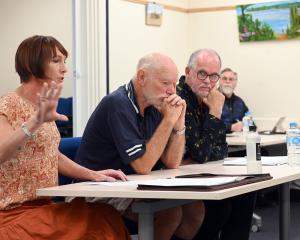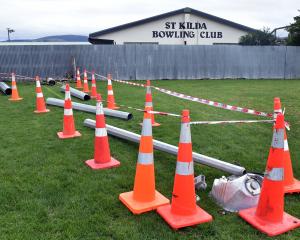An international project that aimed to drill 1.3km into the Alpine Fault has produced ''a wealth of scientific information'', despite being halted early, short of its hoped-for depth, Dunedin project co-leader Dr Virginia Toy says.
Drilling stopped last week, with the borehole at 893m, still the deepest anyone has drilled into a fault in this country.
Dr Toy, who was project co-leader with Dr Rupert Sutherland, of GNS Science, and Assoc Prof John Townend, of Victoria University, Wellington, said she was ''very proud'' of what had been achieved.
Drilling operations in the Deep Fault Drilling Project at Whataroa, north of Franz Josef, ultimately came up about 100m to 200m short of the fault itself, because of equipment problems.
But Dr Toy, a University of Otago geologist, said that much of the ''wealth of scientific information'' recovered had been unexpected, such as the ''abundance'' of graphite that had been found.
She was also involved in an earlier international drilling project in 2012 and spent two months aboard a Japanese research vessel, involved in a record-breaking drilling operation in a deep sea trench near Japan.
This was in the aftermath of a massive subduction zone fault movement which generated a tsunami that killed more than 20,000 Japanese people in March 2011.
It was still unclear exactly what the graphite find meant, but because graphite was ''frictionally weak''- like smectite clays found in the Japanese fault- the Alpine Fault could be ''very weak'' at this point, ''meaning it will slip easily'', she said.
And a great many valuable measurements, including of temperature and fluid pressure, had been obtained, and many scientific publications were expected to result.
Another key finding was that temperatures increased by more than 140 degC for every kilometre below ground.
Dr Toy had also been ''inspired'' to seek more funding to start another borehole at the Alpine site, to ''finish the job'' of drilling through the South Island's largest and most dangerous fault.












